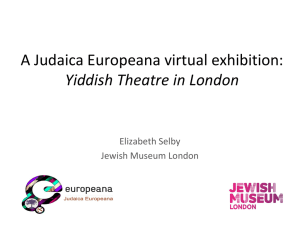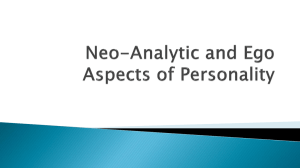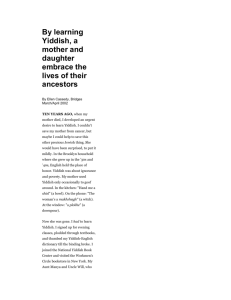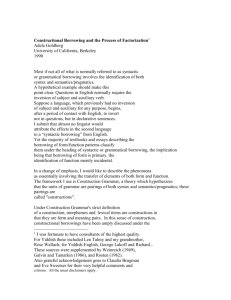Jung Yiddish – by Magdalena Wróblewska
advertisement
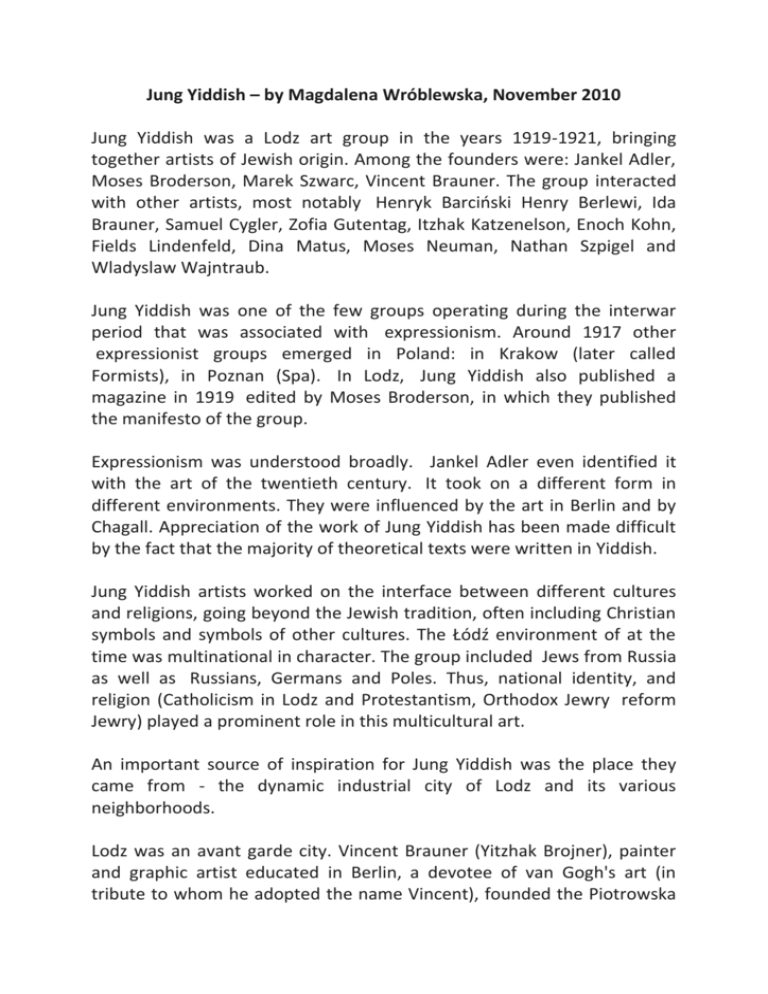
Jung Yiddish – by Magdalena Wróblewska, November 2010 Jung Yiddish was a Lodz art group in the years 1919-1921, bringing together artists of Jewish origin. Among the founders were: Jankel Adler, Moses Broderson, Marek Szwarc, Vincent Brauner. The group interacted with other artists, most notably Henryk Barciński Henry Berlewi, Ida Brauner, Samuel Cygler, Zofia Gutentag, Itzhak Katzenelson, Enoch Kohn, Fields Lindenfeld, Dina Matus, Moses Neuman, Nathan Szpigel and Wladyslaw Wajntraub. Jung Yiddish was one of the few groups operating during the interwar period that was associated with expressionism. Around 1917 other expressionist groups emerged in Poland: in Krakow (later called Formists), in Poznan (Spa). In Lodz, Jung Yiddish also published a magazine in 1919 edited by Moses Broderson, in which they published the manifesto of the group. Expressionism was understood broadly. Jankel Adler even identified it with the art of the twentieth century. It took on a different form in different environments. They were influenced by the art in Berlin and by Chagall. Appreciation of the work of Jung Yiddish has been made difficult by the fact that the majority of theoretical texts were written in Yiddish. Jung Yiddish artists worked on the interface between different cultures and religions, going beyond the Jewish tradition, often including Christian symbols and symbols of other cultures. The Łódź environment of at the time was multinational in character. The group included Jews from Russia as well as Russians, Germans and Poles. Thus, national identity, and religion (Catholicism in Lodz and Protestantism, Orthodox Jewry reform Jewry) played a prominent role in this multicultural art. An important source of inspiration for Jung Yiddish was the place they came from - the dynamic industrial city of Lodz and its various neighborhoods. Lodz was an avant garde city. Vincent Brauner (Yitzhak Brojner), painter and graphic artist educated in Berlin, a devotee of van Gogh's art (in tribute to whom he adopted the name Vincent), founded the Piotrowska Street Art Salon where his own and his friends’ art was exhibited. It was here in 1915 that Marek Szwarc held his first solo exhibition. Marek Szwarc (Schwarz), a painter, sculptor and graphic artist who studied in Paris was acquainted with the art of Marc Chagall. Another artist, Henry Barciński (Enoch Barczyński), painter and printmaker, who received his education in the Glickenstein studio in Warsaw joined the ranks after the proclamation of Polish independence in 1918. Polish painter and graphic artist Jankel Adler, previously living in Berlin, near the gallery "Der Sturm". The work of these artists formed the core of two major exhibitions that took place in Lodz in the spring and winter of 1918, organized by the Association of Artists and Admirers of Fine Arts. At the beginning of 1918 , these artists got the idea of officially founding the artistic group and calling it Jung Yiddish. Then a group of Moscow artists joined - Moses Broderson (Broderzon), who became the ideological leader of the group and the most important theorist. He was not only a graphic designer, but primarily a poet and playwright. After Brauner, Szwarc, Barciński and Adler, the group was joined by: Dina Matus, Ida Brauner (sister of Vincent), Fields Lindenfeld, Zofia Gutenberg, as well as poets: Itzhak Katzenelson, Jecheskiel Moses Neuman (Najman). The first part of the name (Jung) refers to renewal of the arts as a means of expression. The second word Yiddish refers to the identity of the members of the group. Yiddish is a synthesis of many languages and dialects, means of communication developed in Eastern Europe by the Jewish population. Yiddish was considered the language of the lower classes by the intelligentsia. They used it on purpose as an indication of their politics. Selecting Yiddish artists emphasized the specificity of Jewish art and its separateness, yet also its eclecticism and the multiplicity of its cultural references. Numerous illustrations, edited by Broderson in the first issue of the magazine, which appeared Purim March 14, 1919 reflected the same message. It included, a manifesto by Broderson, calling for renewal. In the last issue, November and December 1919 there was an article about Chagall by Adler and a reprinted manifesto by Kurt Heynickiego on the soul of art. In the published texts the need to break with the past was frequently raised. Jung Yiddish painters took an active part in the artistic life of other cities, exhibited their works in Warsaw and Bialystok, also maintained regular contact with the Poznan Rebellion group. In 1921, with Henry Berlewi , they created the "Salon of Futurists, Cubists and naïve artists". Adler presented nineteen works there - urban scenes and work inspired by the iconography of the New Testament, biblical themes were also presented in the majority of the twenty-five paintings by Brauner. Some of the work from this exhibition was then moved to Warsaw. In 1921, the group's activity expired. Artists had established numerous contacts abroad in connection with an exhibition of their work: Yankel Adler in New York, as well as Düsseldorf, where he became friends with the members of Das Junge Rheinland. This resulted in the participation of some of the artists of Jung Yiddish and Rebellion in the 1st International Exhibition of New Art, Tietz Department Store in Düsseldorf in the spring of 1922. On this occasion was organized the founding congress of the Progressive Union of Artists, calling for international cooperation and exchange of artists. Soon after, Jankel Adler participated in the Great Berlin Art Exhibition organized by November-Gruppe. In 1922, some Jung Yiddish artists began to be increasingly associated with the theatre. Broderson founded the famous puppet show "kid" ("Chat Gadja"), where he was a writer, animator and teacher. Brauner had special puppets prepared for him, and he composed the music for performances related to Jung Yiddish Henry (Enoch) Kochn. Artists both individually and in groups continued to exhibit. In 1923, inter alia, Szwarc held a solo exhibit at the Polish Arts Club in Warsaw, and Brauner, a retrospective exhibition of stained glass in Lodz. Literature: Jerzy Malinowski, "Painting and sculpture of Polish Jews in the nineteenth and twentieth century", PWN, Warsaw, 2000; Przemysław Trzeciak, "Around 'Jung Yiddish'", "Midrash", No. 7-8 / 2001; Marek Bartelik, "Models of freedom: a group of artists Jung Yiddish Lodz 1919-1921", "Midrash", 5/2006.
